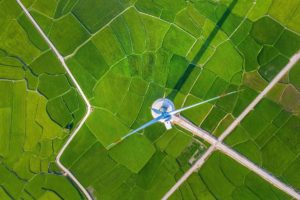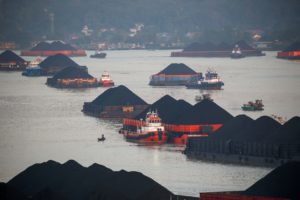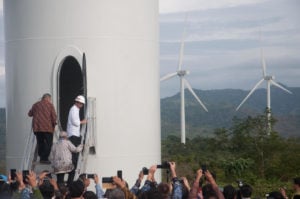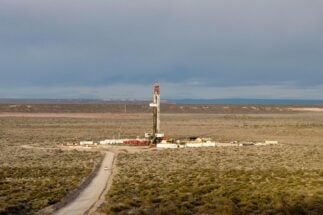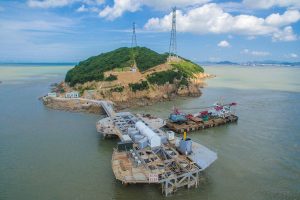Between 2000 and 2019, Indonesia lost more forest to mining than any other tropical country, with coal extraction the main driver, the first ever biome-wide assessment has found.
The study, by researchers from Vienna University of Economics and Business, shows that the country lost 1,901 square kilometres of tree cover as a direct result of industrial mining activities in two decades. Among the 26 countries investigated, this accounted for 58.2% of direct forest loss by mining, making Indonesia the most affected by far.
Across its islands, Indonesia has the third-largest area of primary rainforest in the world. Coal has long been the most extracted mineral there, besides bauxite, nickel and gold, according to official data. In 2021, the country produced 610 million tons of coal, half of which was exported, at a value of US$29.6 billion. The main destination for this coal was China, with 99.2 million tons shipped there.
“Coal extraction in Indonesia is done with open-pit mining, hence the deforestation,” says Syahrul Fitra, a senior forest campaigner at Greenpeace Southeast Asia. Open-pit mining extracts minerals from the earth by removing soil and rocks from above the deposits. Syahrul says the process of clearing forests and creating holes dramatically changes the landscape.
However, in 2019 “only” 1,154 sq km of land was deforested in Indonesia as a result of human activities, the lowest in two decades and a 75% decrease from 2018, which saw 4,624 sq km of loss.
“Although Indonesia’s total deforestation has declined annually since 2015, these findings emphasise the continued need for strong land use planning to ensure mining does not destroy forests or violate community rights,” says Hariadi Kartodihardjo, professor of forest policy at Bogor Agricultural University, West Java.
He argues that the government should stop issuing mining licences in protected forest or conservation areas.
“It is important to note that once a mining permit is issued in a forested area, there must be deforestation, but the problem is that current mining regulations in Indonesia still allow such a thing to happen. Thus it is necessary to assess this regulation,” Hariadi says.
Forests lost to mining expansion
The peer-reviewed study, published last September in the journal Proceedings of the National Academy of Sciences of the United States, used data from 26 countries representing 76.7% of total tropical deforestation between 2000 and 2019. The researchers took the coordinates of active industrial mines and compared them to forest loss over the same time period, using data contained in the global forest change dataset, which is maintained by the University of Maryland.
“Investigated mining areas covered 11,467 square kilometres of land that included 7,019 sq km of tropical forest in 2000. By 2019, 3,264 sq km, or 46.5%) of these forest areas were directly lost to industrial mine expansion,” the report says.
So far, mining is a minor driver compared to other causes of tropical deforestation, such as crop production or livestock farming. However, “its growing importance has been emphasised in various case studies in the Amazon region,” the report states.
The study shows that a similar trend has occurred in other assessed countries, notably Brazil, which accounted for 10%, or 327 sq km, of forest lost to mining since 2000, followed by Ghana (213 sq km, 6.5%), Suriname (203 sq km, 6.2%), and Cote d’Ivoire (99 sq km, 3%). Together with Indonesia, these countries contributed 84% of the observed deforestation directly caused by mining, while the remaining countries accounted for 16%.
“Today, mines worldwide extract double the amount of raw materials compared with the year 2000, with the trend expected to continue in the coming decades,” the assessment says, adding that tropical biomes are particularly vulnerable to mining-related impacts such as deforestation.
According to the study, deforestation related to industrial mining peaked in Indonesia between 2010 and 2014. During this time, Indonesia doubled its coal output to meet increased market demand from China and India, totalling 1,972 million tons of extracted coal.
The coal epicentre of East Kalimantan
The study suggests that coal mining expansion in East Kalimantan on the island of Borneo was the main factor driving mining-related deforestation in the country.
The province is home to some of Indonesia’s biggest coal mines, including the Sangatta mines in Kutai Timur regency, the Pasir mines in Paser regency, and the Fajar Tabang Brian mines in Kutai Kartanegara regency.
“Deforestation is something inevitable in East Kalimantan,” says Mareta Sari, head of the East Kalimantan chapter of the Mining Advocacy Network (Jatam), a non-governmental organisation. “One of the main reasons is the massive coal mining permits, including in forest areas.”
Deforestation is something inevitable in East KalimantanMareta Sari, head of the East Kalimantan chapter of the Mining Advocacy Network (Jatam)
Jatam’s 2021 report reveals that coal permits issued by local and central governments cover 72,000 sq km of East Kalimantan’s 127,000 sq km, or 70% of the province.
In 2001, East Kalimantan had 126,000 sq km of primary forest. However, in the next two decades, it lost 35,000 sq km of this, according to Global Forest Watch figures, leading to emissions of 2.48 gigatonnes of CO2 equivalent.
Local communities are paying a high price. Floods and landslides continue, as do accidental drownings, with 40 deaths reported in abandoned mining pits since 2011. The province also has the highest surface temperature rise in Indonesia, at 0.95C per decade, partly as a result of the tree cover loss.
Despite the alarming impacts, neither extraction nor contract extensions for coal companies seem to be slowing down. According to Mareta, there were leaseholds of forest area licences for coal mining covering a forest area of 1,160 sq km in 2016. Applications for such leaseholds are made to the environment and forestry ministry. They allow development of non-forest business activities, such as mining and power infrastructure, on forest land for a period.
In addition, the mining law, which was revised in 2020, ensured that seven giant coal miners with coal contracts of work (known as PKP2B) due to expire between 2020 and 2025 will have an opportunity to extend their contracts. These firms are expected to contribute 70% of national coal production.
As of April 2020, the government had granted three PKP2B contract holders 10-year extensions, including PT Kaltim Prima Coal, one of the biggest coal producers in East Kalimantan; PT Kendilo Coal Indonesia, which operates in the same province; and PT Arutmin Indonesia in South Kalimantan. All three are subsidiaries of PT Bumi Resources Tbk, owned by Indonesian conglomerate Bakrie Group.
“Although the current government claimed that there have been no new permits in forest areas issued under President Jokowi’s administration, the fact that existing permits got extended is like a nod to further deforestation in the province and across Indonesia,” Mareta says.
Development of the new capital
East Kalimantan was also placed in the spotlight when the central government announced last year that it would be the site of Indonesia’s new capital city, Nusantara. Concerns have been raised about the rushed parliamentary process, the impact on the state budget, and the risk of agrarian conflicts as indigenous peoples are forced to give up their customary land.
Syahrul says the development of the new capital will also encourage further deforestation in the province.
The project is located in Penajam Paser Utara regency. Government office complexes and supporting infrastructure will be built across 2,561 sq km of land. “Granted, the government project has a smart and green city concept, but the new capital city would still be clearing land,” he says.
Mareta says that the construction is likely to spike coal production in East Kalimantan to support infrastructure, including new coal power plants and a smelter to provide battery supplies for electric vehicles in the future capital. “There will be areas outside the new capital city that will be sacrificed,” Mareta says.
Syahrul argues that all mining permits should be evaluated, particularly those in forest areas. He says the government must also resolve disputes between businesses and communities and refrain from extending permits in forest areas. If it is discovered that a permit is being used illegally in a forest area, the permit must be revoked and sanctions given.
Meanwhile, Mareta calls for better reclamation of abandoned coal mines in East Kalimantan. Companies holding mining permits are required to annually deposit funds for land reclamation to ensure that abandoned holes are filled in and trees planted after mining operations conclude. “This is important because it has the potential to restore the landscape in the long run,” says Mareta.
However, less than 1% of the province’s 1,404 business permits are being carried out correctly, including effective monitoring by government and enforcement of the law against companies that fail to comply. One consequence of the failure to manage abandoned mining pits is the frequent occurrence of accidental child drownings, as many of the holes are located near settlements.
Coal production in East Kalimantan soared in 2021, with local officials stating export volumes also increased, triggered by 135.87% year-on-year growth in shipments to China in the third quarter.
China Dialogue has contacted Indonesia’s Ministry of Environment and Forestry for comment.

